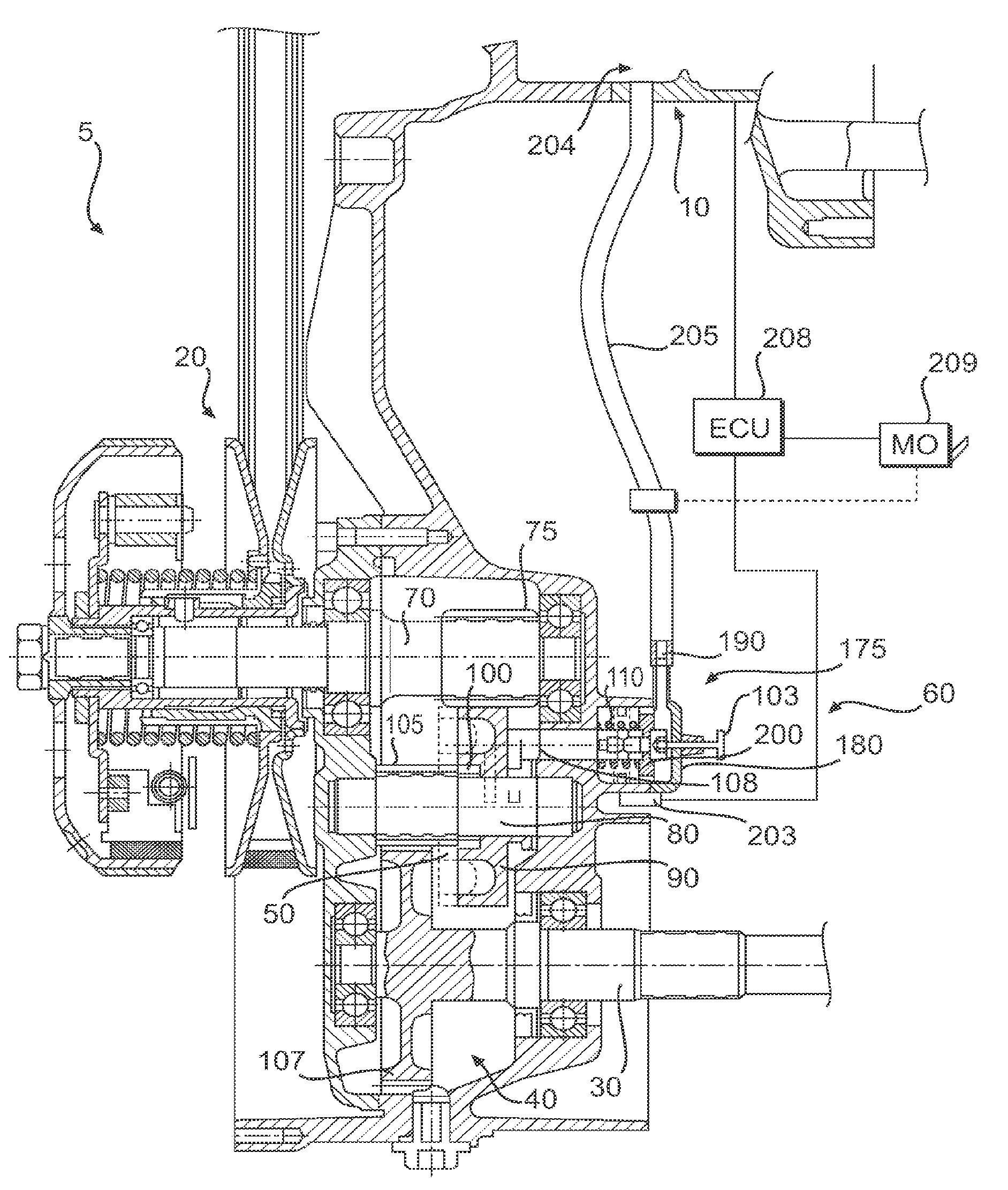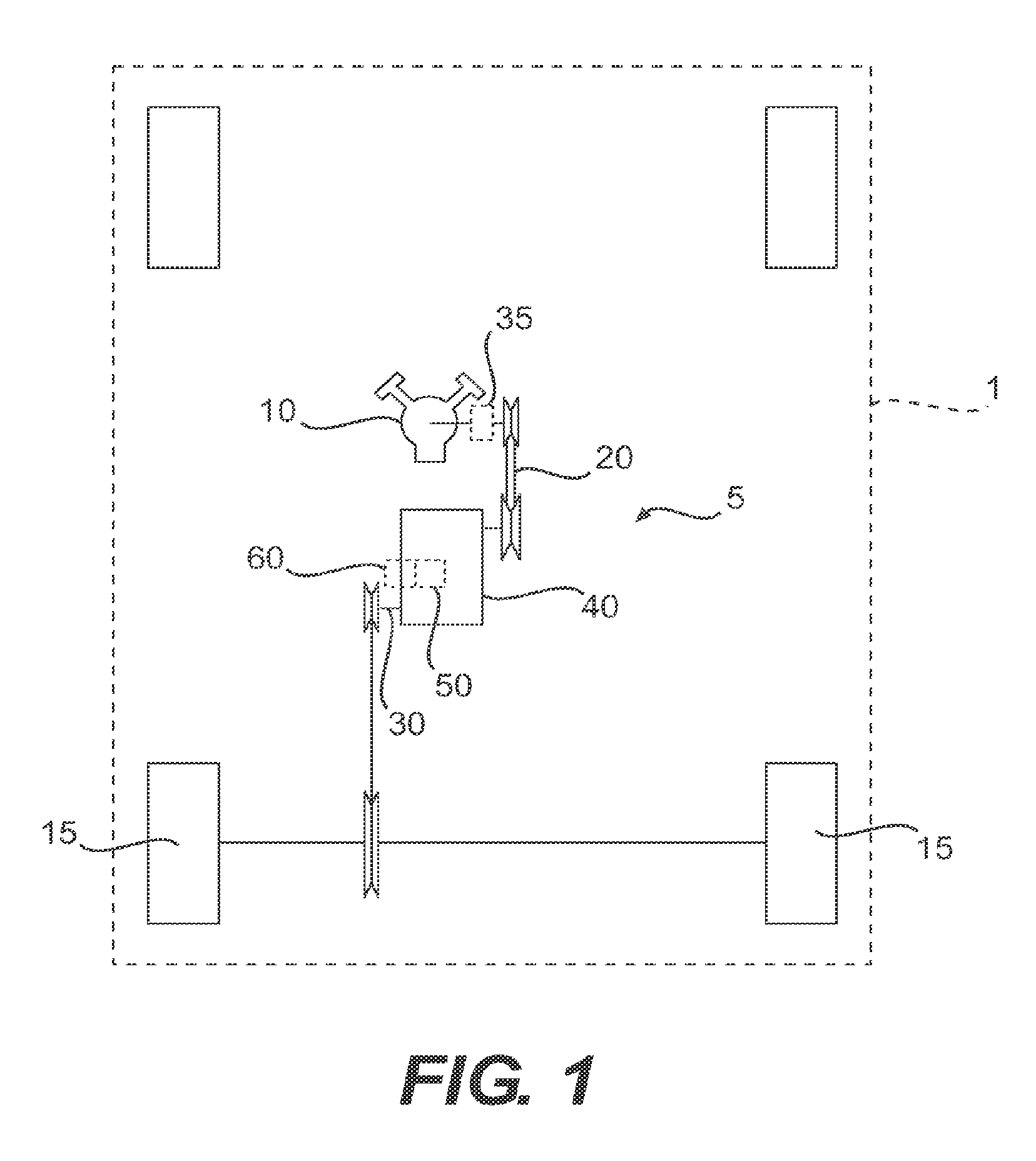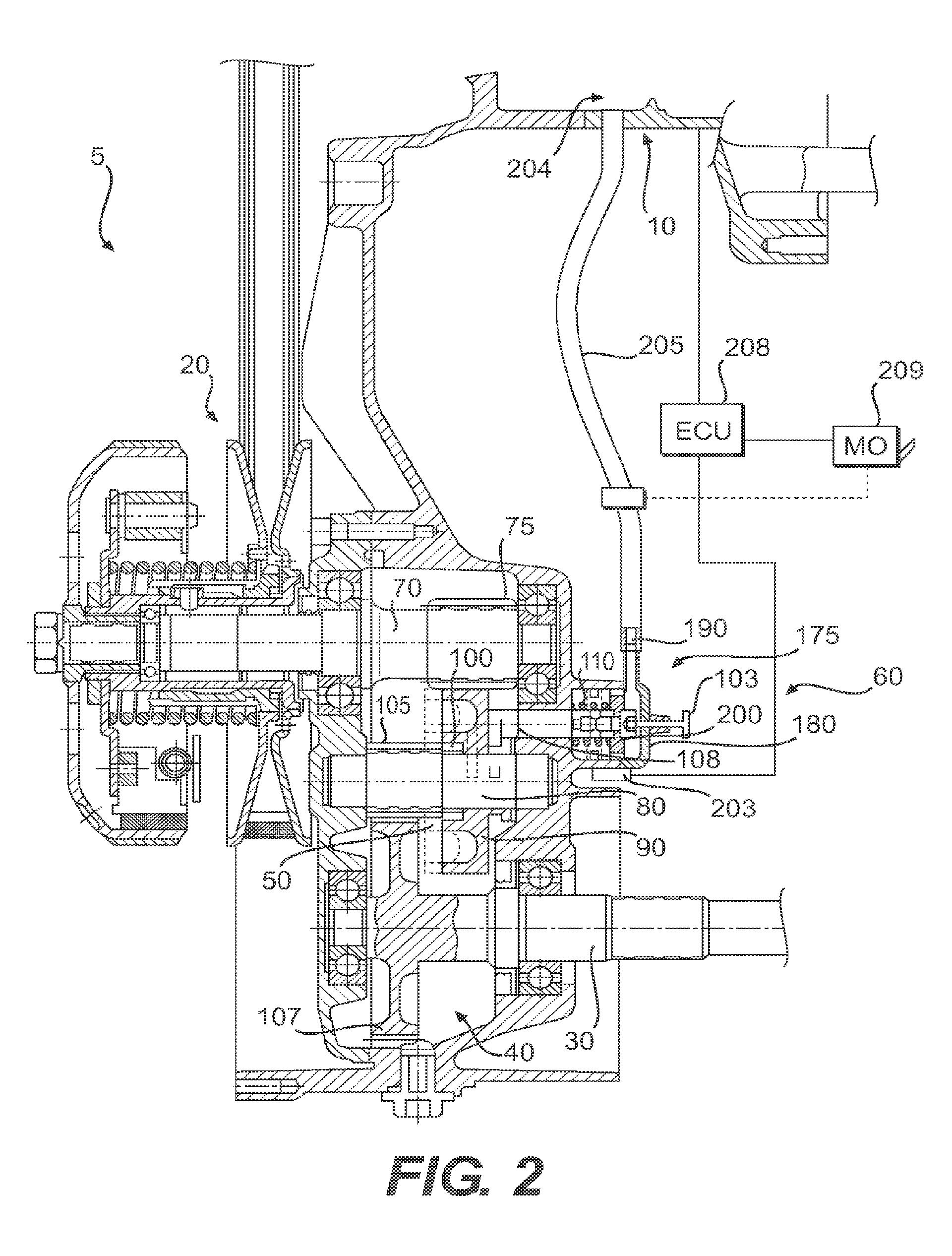Release clutch for a vehicle
a technology for releasing clutches and vehicles, applied in the direction of gearing control, off-road vehicles, portability lifting, etc., can solve the problems of difficult or even impossible to move the vehicle, the propelled device does not drive the clutch, and the ability of the device, so as to achieve the effect of easy vehicle pushing
- Summary
- Abstract
- Description
- Claims
- Application Information
AI Technical Summary
Benefits of technology
Problems solved by technology
Method used
Image
Examples
Embodiment Construction
[0025]As shown in FIG. 1, a vehicle 1, which may be any one of a motorcycle, a scooter, a go-kart, an ATV or a snowmobile, includes, among other conventional elements, a drive train 5 that operatively connects a propulsion unit 10 (e.g., an internal combustion engine, motor, etc.) to a propelled device 15 (e.g., wheel(s), an endless track, etc.). As shown in FIGS. 1 and 2, the drive train 5 includes a continuously variable transmission (CVT) 20 operatively disposed between the propulsion unit 10 and a drive shaft 30 for the propelled device 15. A centrifugal clutch 35 is operatively disposed between the propulsion unit 10 and the CVT 20. Toothed gearing 40 is operatively disposed between the CVT 20 and the drive shaft 30. The drive shaft 30 operatively connects to the propelled device 15 to transfer torque from the toothed gearing 40 to the propelled device 15.
[0026]As shown in FIG. 2, the toothed gearing 40 includes a drive shaft 70 that operatively connects to an output end of the...
PUM
 Login to View More
Login to View More Abstract
Description
Claims
Application Information
 Login to View More
Login to View More - R&D
- Intellectual Property
- Life Sciences
- Materials
- Tech Scout
- Unparalleled Data Quality
- Higher Quality Content
- 60% Fewer Hallucinations
Browse by: Latest US Patents, China's latest patents, Technical Efficacy Thesaurus, Application Domain, Technology Topic, Popular Technical Reports.
© 2025 PatSnap. All rights reserved.Legal|Privacy policy|Modern Slavery Act Transparency Statement|Sitemap|About US| Contact US: help@patsnap.com



